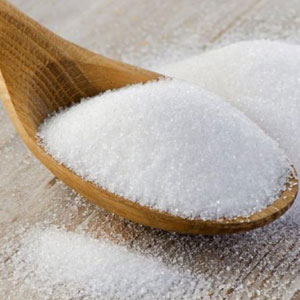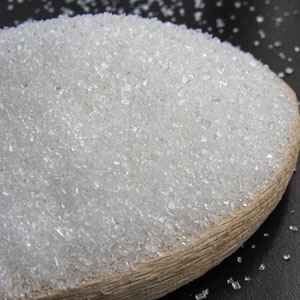Sugar beets are among the most productive and profitable crops, ranking among the top in terms of profitability per hectare. Their cultivation plays a key role in ensuring food security and strengthening the country’s economic stability.
Sugar beet processing mainly yields sugar, so manufacturers use it for confectionery, beverages, syrups, desserts, and other food products. In addition to its energy value, sugar stimulates cerebral circulation and provides enjoyment. The recommended daily intake for an adult is 10–12 teaspoons.
What is Sugar Beet?
Sugar beet is a biennial plant that produces a large root crop weighing 600–1000 g in the first year and stalks with seeds in the second year. Therefore, people value this white-fleshed root vegetable for its high sugar content.
Average chemical composition of sugar beet:
- 75% – water;
- 17.5% – sucrose;
- 2.5% – glucose and fructose;
- 1.2% – fiber;
- 2.1% – pectin; 0.3% – proteins;
- 1.1% – nitrogen, sodium, and potassium, which contribute to the formation of molasses.
The production of sugar from sugar beets involves the processing of by-products. The food industry uses molasses; similarly, sugar producers transform their waste into fertilizer, and they feed pulp to livestock, which increases the animals’ appetite and milk yield.
What Determines the Quality of Root Crops?
The quality of sugar beet depends on its variety, the condition of the seed, the growing region, the correct implementation of all agricultural measures (fertilization, irrigation, disease and pest control, adherence to sowing and harvesting dates), and the conditions for storing root crops outside of the season.
Beet varieties fall into three groups: early-ripening, mid-ripening, and late-ripening:
- high-yielding with large fruits but lower sugar content;
- productive and sugary with average yield;
- sugary with high sucrose content.
The ripening period of various sugar beet varieties ranges from 80 to 170 days from sowing. Breeders are constantly working on developing new hybrids with increased cold resistance, resistance to diseases and pests, and maximum sucrose content.
Sugar Beet Cultivation Conditions
In the fall, farmers prepare the land for harvest by plowing and applying mineral and organic fertilizers. Once the snow melts in the spring and the temperature reaches +5 degrees Celsius, farmers plow and loosen the soil. Then, depending on the region, they sow seeds at a depth of 3–5 cm with a row spacing of 45 cm, typically between March and May. At subzero temperatures, seedlings can die. Young shoots thrive on warmth, light, and moisture. The optimal temperature for sugar beet growth and development is 20–22 degrees Celsius.
During the growing season, farmers remove weeds and treat crops with pesticides and disease control agents, and they harvest in September or early October. Sugar factories typically store the harvest in specially equipped and well-ventilated storage facilities on vertical shelves at humidity levels up to 90% and temperatures up to +4 degrees Celsius, but they strive to process it as quickly as possible.
Stages of Sugar Production from Sugar Beets
The production technology was first developed and implemented at the beginning of the 19th century by the Russian scientist Yakov Esipov. The processes have improved over time, but their essence has remained virtually unchanged.
The process of sugar production from beets consists of the following steps:
- First, workers clean root vegetables of soil, debris, and other foreign matter.
- Drum machine operators (or workers, or the process) thoroughly wash the beets, treat them with a disinfectant solution, and prepare them for the next steps.
- Electromagnetic separators remove iron and other metals from the raw materials.
- Weighing determines the initial quantity of raw materials.
- Using beet cutters, the root vegetables are cut into small slices, 5 mm long and 1–1.5 mm wide. The waste coefficient is calculated for each batch of raw materials.
- The resulting shavings pass through a screw mechanism, which extracts juice.
- Vacuum presses or filter presses separate the juice from the pulp.
- Evaporation concentrates the juice into a syrup, and treatment with sulfur dioxide gas decolorizes it.
- After filtering the syrup, the technicians boil it under vacuum until it forms a crystallized mass. Then, they feed the mass into the distributor’s mixer.
- The sugar crystals are bleached in a centrifuge.
- The resulting product is dried in a drum dryer.
- Bulk white beet sugar is sent for packaging and processing and sent to the finished product warehouse.
After the crystals formed, we boil down the concentrated mother liquor again and then feed it into a centrifuge to obtain yellow sugar and feed molasses. The ripeness of beet roots, the processing technology, and the condition of production equipment each strongly influence, and subsequently determine, the finished sugar yield. The more sucrose the fruit contains, the higher the yield of the finished product.
Production Indicators
From 1 ton of raw material of sugar beets, an average of 130–160 kg of white beet sugar (similar to white cane sugar icumsa 45), up to 40 kg of molasses, and the remaining 800–830 kg are obtained. By using the pulp from the beets grown per hectare, producers obtain an average of 5 tons of granulated sugar.
Environmental Aspects of Production
In the 21st century, environmental issues in production are a strategic focus. During the sugar production process, factories consume large quantities of clean water, which releases wastewater into the environment and pollutes the soil.
The sugar industry strives to minimize its impact on the environment. Therefore, companies are introducing resource-saving technologies, modernizing their facilities, and rebuilding production lines to achieve this. Manufacturers use the pulp to produce high-quality feed pellets containing fiber, vitamins, and protein; meanwhile, they use molasses to produce yeast, alcohol, and organic acids.
The cultivation of sugar beets and the production of this sweet and popular product, known in Eastern Europe as white beet sugar, which everyone needs, is of strategic importance for meeting the needs of consumers in Eastern and Central European countries, increasing the competitiveness of the domestic product on the foreign market, and strengthening the country’s economy. For example, Russian sugar beet production has all the prerequisites and opportunities to achieve higher production levels and improve quality. At the same time, there is competition from beet sugar producers from Ukraine and Poland, who are vying for the same markets in the Black Sea region.



